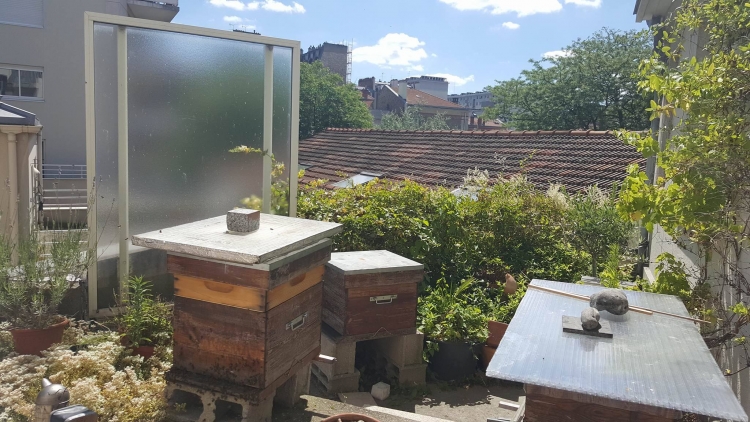The Buzz On Bees In Paris

For the past few years, we've been seeing increasing numbers of bees in places we never expected to see them: our city centers. So what's attracting them?
Bees are small but bees are complex. Above all, they are social insects. All decisions made by bees have to be approved by the colony as a whole. If a bee finds food, she will perform a special dance in front of her hive to signal what she has found. During these dances, there is a sound emitted by the bee's wings and an odor of nectar is diffused, which lets the other bees know where to find her.
Image Credit: Kimberley Pelissier
Each bee has a different role to play inside its beehive. Some bees have as a summer job, the "fan" job. Their goal is to flap their wings as fast as they can so that there is ventilation throughout the hive. On the other hand, it is the worker bees who decide when a new queen bee should be reproduced.
Bees have always existed in cities but until now it was rarely for the production of honey; apart from the well-known beehives in Paris' Jardin du Luxembourg.
My expert bee friend, Hayk Kal, says "Les abeilles en ville ont tendance à se porter mieux, ainsi qu'à produire plus de miel que les abeilles à la campagne." This beautiful French sentence is hard to translate into English but basically means that there are more bees in Paris because Paris is a city and bees are stronger and healthier in cities than they are in the countryside. In fact, the activity of bees depends on the blooming season. However, monoculture, our tendency to cultivate a single type of crop in any given area, offers less variety of flowers and therefore less harvest time. The bees therefore have longer distances to travel and end up producing less honey. As the days draw in, the bees go into food gathering mode to stock up before winter, which is why we start seeing more of them in the city in the autumn.
Image Credit: Kimberley Pelissier
In Paris, due to the wide variety of flowers, multiple consecutive harvests are possible. For example, in the 14th arrondissement of Paris in 2015, 108 kilos of honey were gathered from just two beehives. The honey gathered was used to make different flavored honeys that included chestnut, lime flower, honeysuckle and japonica.
The countryside is becoming increasingly perilous for bees as widely used pesticides are putting them in danger. Just like humans, bees have instincts and can therefore feel that these pesticides are harming them, if not killing them, and that is why they are migrating in growing numbers to urban environments. Added to that, the pesticides used on crops are smelt by the bees (bees find their way with smell) and this destabilizes them, causing them to forget how to get back to their beehives, forcing them to leave and fly towards cities. The fact that cities also have a microclimate making them two or three degrees hotter than the outlying fields is also attractive to bees.
We now know that bees are dying off in ever greater numbers and exposure to pesticides is the number one cause. There are, however, other causes people tend to forget but which shouldn't be neglected such the contamination of soil, making it hostile to biodiversity, as well as the destruction of natural habitats that include hedges, groves, natural grasslands and wetlands.
Image Credit: Kimberley Pelissier
It would be easy to think that a city environment with its high levels of carbon monoxide pollution would not be a welcoming place for our little furry friends but the opposite is true. In fact, we humans could not survive the huge doses of carbon dioxide that thousands of bees produce constantly in their own hives.
Overall, the city bee is happier and healthier then the country bee. The pollen gathered in private city gardens and public city parks produces a more abundant, tastier and richer honey than in it would in the countryside. The average annual yield of honey from beehives in the city is of 16 kilos, while it is only seven in the countryside.
Fun fact: Bees are one of the only animals that we can send via air mail. When a beehive is "orphaned" because it has lost its queen, it is possible for the beekeeper to order another one. Once ordered, it is expedited by the post office who put it in a small plastic box with two or three working bees. The box is sealed with a sugar cap. The reason for this sugar cap or lid is because the working bees will eat it, bit by bit, so that they can get used to their new queen.
These buzzing bees will always surprise us and we sure as hell need them!











